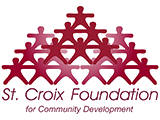Do you know who the smartest kids in the world are? Amanda Ripley, author of The Smartest Kids in the World: And How They Got that Way, recently decided to look for an answer. In her book, Ripley explores many of the myths surrounding ‘smart kids’ by following three American students who studied in some of the highest performing educational systems in the world.
What Ripley found was that ‘smart kids’ are found everywhere. They are found in classrooms with over 60 students, in ramshackle schools, without textbooks or even chalkboards. High performers are sometimes homeless, sometimes orphans, and yet they succeed. Why? According to Ripley and other researchers, many smart kids are smart because of the teacher. In fact, while culture, geography, and politics can vary widely, one thing is common between high performing students: a truly great teacher.
But unfortunately, it has not been easy for nations around the globe to build a larger pool of master teachers. In America, the job is even tougher. The Organization for Economic Cooperation and Development (OECD) states that “American teachers work harder under much more challenging conditions than teachers elsewhere in the industrialized world. They receive less useful feedback, less helpful professional development, and have less time to collaborate to improve their instructional skills. Not surprisingly, two-thirds feel their profession is not valued by society — an indicator that OECD finds is ultimately related to student achievement” (Darling-Hammond).
Luckily, we can ensure that all our young people have the best and brightest standing in front of every classroom by examining and implementing successful models that are transforming the teaching profession around the world:
FINLAND: To improve their education system, Finland relied heavily on improving teacher quality through restructuring teacher education programs. Today, as a result 93% of their students complete high school on time (Tschudi). And, for the past decade, Finland has scored in the top tier of the Program for International Student Assessment– the international equivalent of the SATs (OECD, p. 118). How did they do it?
First, as Ripley reported, they closed smaller schools of education and moved teacher preparation into the more respected universities (p. 88-89). At the same time, they raised the entrance standards for teacher-training programs, making the profession as “prestigious as a getting into medical schools in the United States” (p. 85). In Finland, all teachers are required to:
• Be in the top 1/3 of their high school graduating class (Auguste);
• Complete a rigorous application process, including taking special examinations specific to their desired course of study (Ripley, p. 84);
• Take three years of ‘general’ courses, including high level math and statistics (p. 86);
• Hold a Master’s degree and complete a three-year graduate school preparation program that includes:
o One year of internship in a public school under the tutelage of three teacher mentors who train and provide feedback that is at times, “harsh, in much the way medical residents are critiqued in teaching hospitals,” and;
o Complete original research (p. 86).
But, as an added bonus, Finnish high school teachers with 15 years of experience make 102% of what their fellow university graduates do and because Finland pays for a teacher’s education, they graduate without debt. Contrastingly, in the United States, a teacher with a Master’s degree earns just 65% of their peers and must carefully piece together grants, scholarships, and student loans to pay for their education (Tschudi).
A 2007 McKinsey report stated that, “the quality of an education system cannot exceed the quality of its teachers” (Barber, p. 16). We couldn’t agree more. In fact, we believe serious consideration must be given to the creation of a state-of-the-art teaching college in the USVI with the highest entrance standards and real-world, in-class instruction where teachers-in-training are mentored by master teachers and taught by local, regional, and international experts. And while some believe high entrance standards and a rigorous curriculum will discourage our youth from wanting to be teachers, consider this: Rhode Island’s push to increase entrance standards at their School of Education initially met with controversy with its dean arguing that higher standards would discourage students from applying; instead, their application and admittance rate went up, even among minorities (Ripley, p. 92).
We think all will agree that our children deserve the best, and the Virgin Islands has the talent necessary to ensure they receive it. We encourage teachers, parents, and education stakeholders to visit the St. Croix Foundation’s Facebook page and watch “The Finland Phenomenon,” and this election season, let’s all ask our candidates what models and policies they plan to support to improve teacher quality. Because, Virgin Islands children can be the smartest in the world…
For more information, please contact us at 773.9898.
Sources
Auguste, B., Kihn, P., & and Miller. M. (2010). Closing the talent gap: Attracting and retaining top third graduates to a career in teaching. McKinsey & Company. Retrieved from https://mckinseyonsociety.com/closing-the-talent-gap/
Barber, M. & Mourshed, M. (2007). How the world’s best-performing school systems come out on top. McKinsey & Company. Retrieved from https://mckinseyonsociety.com/downloads/reports/Education/Worlds_School_Systems_Final.pdf
Darling-Hammond, Linda. (2014). To close the achievement gap, we need to close the teaching gap. The Huffington Post. Retrieved from https://www.huffingtonpost.com/linda-darlinghammond/to-close-the-achievement_b_5542614.html?utm_hp_ref=mostpopular,teachers
Jehlen, Alain. (2010). How Finland reached the top of the educational rankings. NEA Today. Retrieved from https://neatoday.org/2010/10/07/how-finland-reached-the-top-of-the-educational-rankings/
Organization for Economic Cooperation and Development. (2011). Lessons from PISA for the United States, Strong Performers and Successful Reformers in Education, OECD Publishing. Retrieved from https://www.oecd.org/pisa/46623978.pdf
Ripley, Amanda. (2013).The smartest kids in the world: And how they got that way. New York, NY: Simon & Schuster
Tschudi, Edle Astrup. (2014) Finland’s education system through foreign eyes. Brown Political Review. Retrieved from https://www.brownpoliticalreview.org/2014/04/finlands-education-system-through-foreign-eyes/
For information on the Program for International Student Assessment, visit their website here: https://www.oecd.org/pisa/
